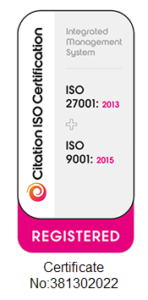Tips and Tricks for Running a Successful Virtual Event
“To accept good advice is but to increase one’s own ability.” – Johann Wolfgang von Goethe
For nearly two years, since the start of the pandemic, Open Audience has been managing virtual meetings on behalf of many different customers – from large international conferences to smaller team meetings, and everything in between.
As the stress of trying to run a meeting while managing the technicalities of Zoom or other platforms has taken its toll, meeting organisers have sought help to improve the experience for themselves and for attendees.
Experience has taught us that a lot can go wrong if you’re trying to juggle too much while running a meeting. So how do you avoid the stress if you’re asked to run a meeting?
First, if you can, get help and delegate. If all you have to worry about is running the meeting and someone else is managing the logistics of sharing slides and dealing with visual and sound issues, you’re more likely to have a good experience.
Second, practice, then practice some more. Often, presenters don’t know what the audience sees. When we’re running an event, we have multiple screens so we can see what the audience is seeing while also keeping an eye on what the presenter is doing. If you don’t have that luxury, practice your session and record it so you can watch it and learn from any issues that crop up.
Rehearse to avoid missteps
Before you have a meeting, do a rehearsal so you can see how presenters will appear, and guide them through any visual changes that will help to make the session more effective and engaging, or at the very least improve the sound quality. For example, some companies are giving attendees conference microphones to use, but if these aren’t in front of your keyboard the sound quality can be poor. We check all that during a rehearsal to make sure the sound quality is good, which makes all the difference to the quality of the meeting.
Another common issue is staying up to date with updates. Streaming platforms have been updating on an almost weekly basis over the past two years. It’s easy to just click through that, which can mean you’re left with problems. Take the time to check the updates and decide whether to accept. These updates often fix bugs or add new features or remove old ones, but users seldom read through what the updates are doing. Make sure you know what those updates are doing and be aware of what that means. One example is Zoom changed permissions around recording, so organisers can no longer sneakily record a session without attendees knowing.
Platforms are becoming more sophisticated, which for irregular users means there’s more to think about and worry about.
Running a good virtual meeting often involves simple tips and tricks, such as knowing that the quality of the slides goes down if the video is on high quality. That matters if you have data-rich slides you want to show to the audience. To overcome that issue, we toggle between maximise video tab and turning off the high-quality video to allow the focus to shift from presenter to slides and back again.
Knowing the right set up is difficult for periodic users of a platform. If there are role models or best practices to follow, the quality – and therefore comfort level – of virtual events will improve significantly.
Leslie Robertson is the Founder of Open Audience, an audience engagement consultancy that specialises in making life sciences meetings more engaging with more positive, successful outcomes – whether in-person or in the virtual space. The Open Audience team helps to strategise and prepare pre- and post-meeting as well as providing real-time support and guidance during the meeting. Open Audience also offers customisable, multilingual engagement platforms that include interactive polling, surveys, and ideas exchange.

